Reese Family History & Genealogy
Reese Last Name History & Origin
AddHistory
We don't have any information on the history of the Reese name. Have information to share?
Name Origin
We don't have any information on the origins of the Reese name. Have information to share?
Spellings & Pronunciations
We don't have any alternate spellings or pronunciation information on the Reese name. Have information to share?
Nationality & Ethnicity
We don't have any information on the nationality / ethnicity of the Reese name. Have information to share?
Famous People named Reese
Are there famous people from the Reese family? Share their story.
Early Reeses
These are the earliest records we have of the Reese family.

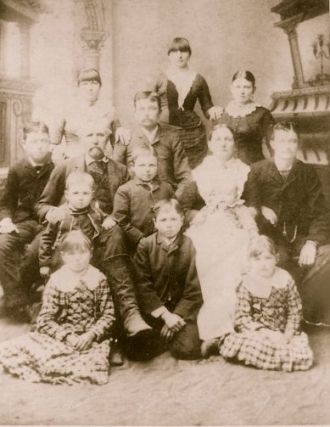

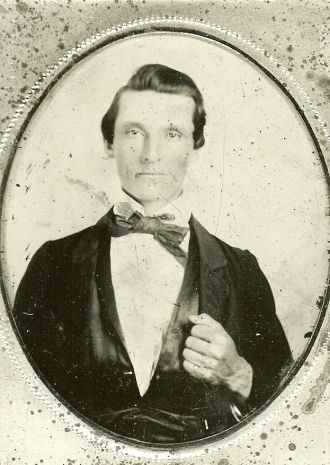
Reese Family Members
Reese Family Photos
Discover Reese family photos shared by the community. These photos contain people and places related to the Reese last name.

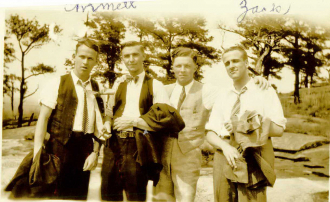
Emmett Reese, (Far Left), McCommone of Greensborough, Greene, Ga, Reynolds of Greensborough, Zack Martin .

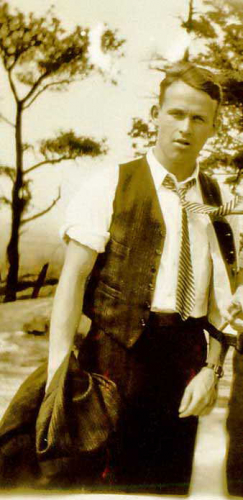
Birth
17 May 1910
Alabama, USA
Death
23 Jul 1988 (aged 78)
Culpeper County, Virginia, USA
Burial
Culpeper National Cemetery
Culpeper, Culpeper County, Virginia, USA
Plot
B, 246
Memorial ID
3004147


1967
Mary Washington College of the University of Virginia
Fredericksburg, Virginia, USA


1965
Thomas Jefferson High School (thru 1988)
Alexandria, Virginia, USA


1965
Thomas Jefferson High School (thru 1988)
Alexandria, Virginia, USA
Reese Family Tree
Discover the most common names, oldest records and life expectancy of people with the last name Reese.
Updated Reese Biographies




Popular Reese Biographies

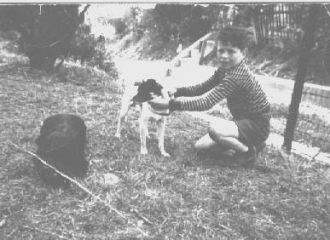







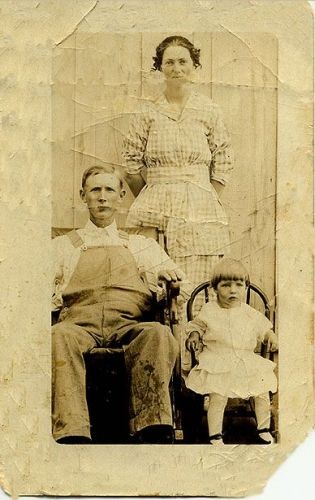

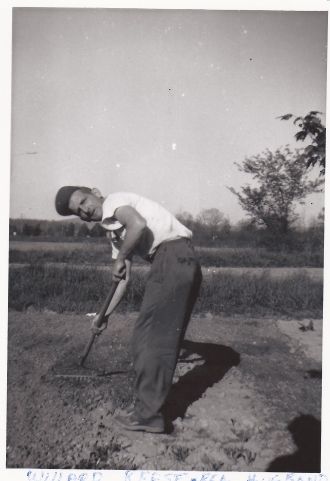

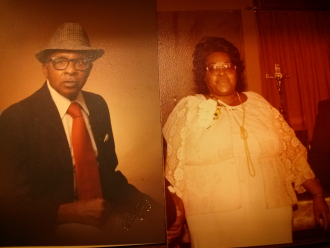


Reese Death Records & Life Expectancy
The average age of a Reese family member is 71.0 years old according to our database of 26,712 people with the last name Reese that have a birth and death date listed.
Life Expectancy
Oldest Reeses
These are the longest-lived members of the Reese family on AncientFaces.
Other Reese Records
Share memories about your Reese family
Leave comments and ask questions related to the Reese family.
Followers & Sources

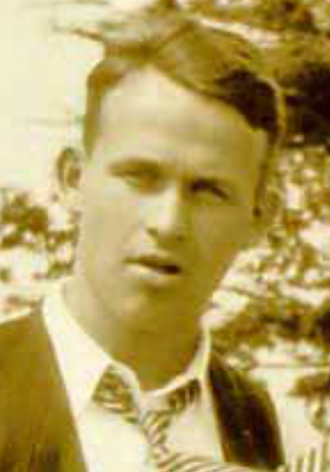
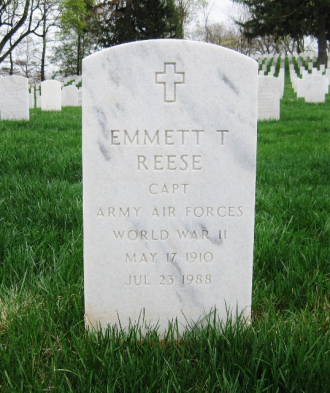

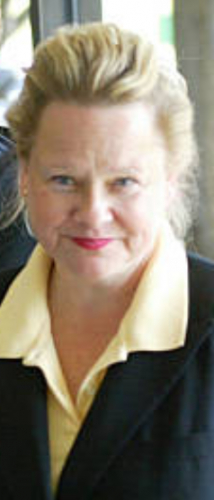
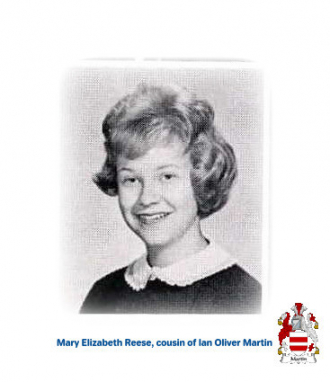



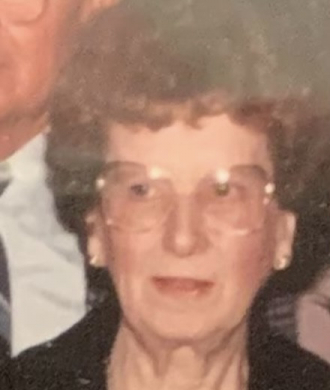



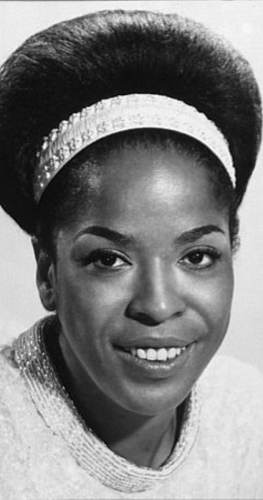
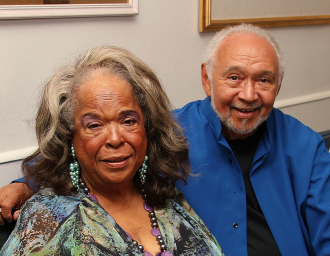
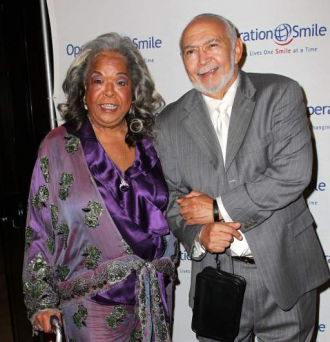
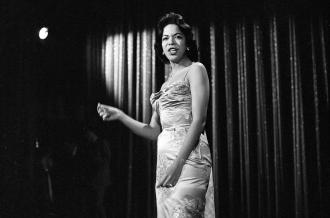

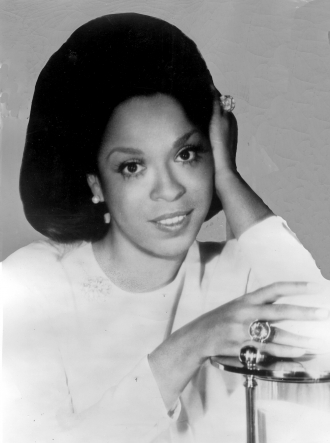
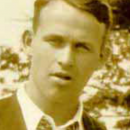
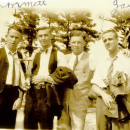
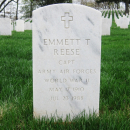
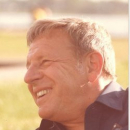

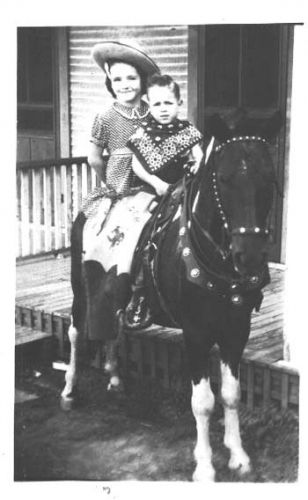
History of A.B. REESE TOLD BY HIM TO JOHN REESE
WITH BITS ADDED BY KATE REESE THAT WAS TOLD TO HER BY BOYD REESE
ALVA BOYD REESE
Born on 19th July 1888 at Carthage Missouri (more specifically at Parshley, a small community in the country about 11 miles from Carthage). Dr Hannah helped deliver the child born to Boyd E Reese and his wife Rachel Elizabeth (Kinney). Boyd and Rachel had married when she was 14. There were 8 boys and 3 girls. The youngest, of whose birth we speak, was called Alva Boyd Reese.
The author has a photograph of an old log house lived in by the family. Alva is aged about 4 in the photo.
In 1899 the family mad a trip by covered wagon to Oklahomo to see about getting land there, but returned in 1900 and instead settled on an 80 acre plot in Newton County near Carthage. Joe Johnson lives there now. (1978)
The young boy stayed there going to grade school and growing in may ways. In 1906 at 18 years he went to Western Bible and Literary College at Odessa, Missouri. The president of this college was J N Gardener.
In 1907 Alva met Margaret Lankford of Mayrie near Odessa, daughter of Robert Lankford and Jennie D (Gordon) Lankford.
Alva taught then in public schools after their marriage on 11th May 1918. In the 1919 summer, Alva received a letter with $75 enclosed for a fare, and asking him to come to teach in the Pacific Christian Academy. He left his $90 job and moved to Graton, California to take on this job for $40 in order to teach Christian Young people. He was appointed superintendent and worked there for 5 years. He was principal there the 1st year and last year. O W Gardener was the principal in the interim. In 1924 Alva and family moved to Morilton, Arkansas (Harding College) in order to get more education. He graduated in the Spring (August) of 1925 and in the fall took the super tendency of the Rector public School system. (High School, Grammar school, Grade school = 525 pupils).
Brother J N Armstrong, president of Harding wrote 3 times to Alva in order to get him to come teach in the college. Finally the family moved back to Morilton and became principal of the Academy as well as instructor in college history classes. This continue for 18 months. In the summer, he went to Kansas to work on the harvest.
In 1928 Alva took his wife and mother up to their home near Joplin and his mother died on 16th June of that year. For a short while he taught in the local school but at Christmas he offered his resignation in order to got to Africa.
Back in 1925 Benson had tried to encourage Alva to go to China with him, but they mutually decided that at that time the church was not willing to support two families in China. George S Benson left for China in about 1925.
After Christmas 1928 Alva and Margaret went up to Springfield Mo. To the Madison and Broadway Congregation – the Preacher there was L O Sanderson who greatly encouraged the couple. Alva spoke to the church, he said that he had hear of the Mt Broadway Church all of his life, but had never heard of them doing anything, so they were given a chance to “show their colours”. They agreed to ordain him as a missionary. However, this church never did give 1 cent towards their work, as a church. L O Sanderson sent $25 every month for 3 years from his own pocket and as he collected from interested individuals. The church itself promised nothing. Never the less Alva and Margaret went back home and packed in preparation to leave. Then they went to Louisville, Tenn and picked up the tickets from Don Carlos Jones (an evangelist, who had helped many people to go overseas – like Scott and Merritt) “Don Carlos was about the only man interested enough.
From Louisville they went by train to New York and there they boarded a ship – The Paris, a French liner (7,000 ton approx) at 8pm on 12th February 1929. They had no promises of any support at all. They went entirely on faith. It took 5 days to cross the Atlantic. They both were sick all the way across in what seem to them to be rough seas. From Bordeaux, France they crossed to Plymouth, England. Alve then went to the train station to buy tickets. He did not know English currency, so he just held out his hand for them to take whatever was needed. The train took them to South Hampton where the boat was dockets that was to take them to South Africa. In the train were two welsh ladies. Alva happened to to look out the window to see two pigs in a farmyard, he mentioned “Oh have you hogs in this country too”. The ladies did not understand what hogs were until he pointed the creatures out to them. Next day, after a cold shave and breakfast, they boarded the ship at 9am, Carnarvan Castle. After a short stop at Madeira, they arrived in Cape Town around 9th March 1929. Then by train they headed north, arriving in Livingstone about 12th March. (They were in Cape Town long enough to go up Table Mountain. On their trip up to Northern Rhodesia having no money they lived on pineapples and cheap tea cakes.)
WHY WE WENT TO AFRICA by A B Reese
We felt a divine urge from having been brought up at the feet of such men as the Gardener brothers who, sacrificed so that we might catch a vision of our purpose in the world. Having learned a few lessons of service and to trust the Lord for his promise which He made to us that if we should leave our houses, and lands, mothers and fathers, brothers and sisters for the Kingdom of Heaven's sake, He would give us a hundredfold of each, we felt blessing was too great to be refused if few understood that promise. So taking God's dare to pour us out such a blessing that there should not be room to contain it, we launched forth with a similar faith to Abraham;s expecting God to provide.
Madison and Broadway, Springfield, Missouri, sponsored our work, promising $10 per month support, but there were no others who promised. Fares were paid largely from borrowed money and the required entrance money was also borrowed. Afterwards we found this to be a serious hindrance for this all had to be paid back before we could well advance. But Brethren Sanderson and Janes were working just as heroically on this side to fix things up while we were burying ourselves in the work over there.
Having read, studied and prayed much about the mission field we left Pacific Christian Academy at Graton, where we had taught for five years, fully intending to go to China after taking my degree at Harding College in 1925. (Alva was admitted to Harding College on 20th September 1920. He holds a degree of Bachelor of Arts.) But we found other plans in store for us (Alva was awarded a Teachers Certificate from Newton County on 11th August 1928 obtaining it on 10th February 1928., Finished Grammar School on 31st December 1921)
In the spring of 1925 Brother Benson came to our rooms to talk over going to China. He tried to encourage and persuade our going and we tried to get promise to go with us. But he refused to talk about going with us. As we had one child in school we had one more reason for staying that they did for them, he was not married but was thinking about it. We told him they better go. They went and we went to Rector to the Superintendency of the city schools for a year, returning to Harding College for two years as Principal and Professor of History of the Academy.
My mother had asked us repeatedly not to go till she passed on, and the last six months she made her home with us at Morrilton. I took her home just two weeks before school closed in June 1928. I got my home school to teach, so as to be thee where Margaret cold care for her. (Boyd also went to this school. He and his father used to walk there and back in all weathers, rain, snow or sun.) She passed away 19th June 1928. We feel we did a child's duty in this course and do not regret it at all. I taught the home school till our plans and passports could be had, then I resigned at vacation time and we were off on 29th February, taking the boat on 12th March 1929.
Perhaps another factor helping us decide on Africa was the fact that my sister, Ottis, and her husband George and daughter Helen Pearl were already in Africa. Also their fellow missionary Ray Lawyer, had been killed when he accidentally fell on a spear. Dow Merrit needed help at Kabanga Mission and George and Ottis Scott needed help at Sinde Mission. Leslie and Addie Brown and four children and ourselves heeded their pleas for help. We have been working together in school work ever since we started to W.B. And L.C. In 1906 at Odessa, Missouri. With these reasons you can see why we chose Africa.
With $10 per month promised for support let us now look to see if we can find God's fulfillment of His promise literally a hundredfold.
1.All borrowed money paid back.
2.We carried on eight and a half years, supplementing our support by various means on the field by as much again.
3.Our average support raised to 460 per month. Do you say making our own support is not God supplying it? Yes, it is. He supplies the opportunity and we just take advantage of it. Let us not tell God how He is to do His part of it, but let us do ours.
4.Two last years in succession we had crops of tomatoes, which netted us between $300 and $400. (Nobody else had any for 700 miles up and down the railroad. Why us only?) (They would some mornings if thee was a likelihood of frost get up at 4am and burn cow dung to cause a smoke screen over the fields. This would prevent the frost hitting the tomatoes. Also why Alva said railroad and not road, was probably because the roads were terrible and the train was a very good way of getting from A to B even if it was only a short distance.)
Jimmy Clausen who was working at the flour mills met them at the station at about 8am and took them to breakfast. Jimmy was the father of Alex, Rhona, Fricky and Carl.
They were to spend 3 years at Sinde under Scott's tutorship. He calls this his apprenticeship. After the 3 years, 5 more years were spent at Sinde making 8 consecutive years there. Sister Scott was Alva's older sister, Ottis Adelaide. Brother Scott's first name was George M and their daughter was Helen Pearl.
THREE YEARS AT SINDE
The Scott's and Reese's were the only 2 families at Sinde for the first 3 years, having to be “Jack of all trades” doing everything. Alva was skilled at building and working with wood. In order to support his family, he built scotch carts to be used with the oxen. He also made furniture to sell. Like most missionary families the Reese's grew some of their own food and they learned which weeds were edible and added those to their diet. (one weed reminded them of the taste of cranberries). Ottis and Margaret did most of the teaching with Brother Reese teaching the bible. During this period, just $25 was coming in per month. Hunting was done for meat. Alva traveled into the interior in search of wild cattle that he bought from the native owners. (Some were likely seeing a white man for the first time, for this period was not long after the ground-breaking explorations of David Livingstone). When Alva returned with wild cattle, it was the task of his teenage son, Boyd, to domesticate the cattle so that they could be sold at market. The work was hard and dangerous. Boyd had several narrow escapes while handling aggressive bulls. These were the things that had to be done to continue the mission work in Africa. Just the demands of daily life could be threatening. African diseases were not kind to newcomers who had not yet built up immunities. Wildlife still dominated many parts of the continent. A missionary report called Glimpses of Africa gives hints here and there of living conditions. The July 1947 issue quotes a letter written by Helen Pearl. The Merritt family had been returning home when their wagon broke down five miles from the house. Dow carried Roy and Helen Pearl carried their other child, Roseland. Helen Pearl wrote to her aunt, Margaret Reese; “The Southern Cross was directly in front of us for a while and the moon finally came up so that we could see the tracks most of the time without a torch. We shied around a few sticks lest they be snakes and looked fearfully at an ant hill and stump which shadowy figures looked as if they were moving through the grass. I thought about you coming home twice as far one night in the rain. You had no shoes and had to wade several swollen streams with only the lightening to show you the road. Thinking of how much worse it might have been made, Roseland much lighter and blisters on the bottom of my feet much less noticeable.” This was all very well but obviously some things had to be bought. Zambezi Trading Company in Livingstone being the general trading store.
Margaret got ill with a 5lb tumor so she had to go into Livingstone hospital for surgery. After admitting her into hospital, Alva went over to the trading store. “You know that you are $500 in debt” said the grocer. “Yes I realize that” said Alva adding “I will see what I can do about it”. Alva then went over to the telegraph office and sent a telegram to Don Carlos Jones which read “No food, no money, no credit, what shall we do?” Margaret's operation was successful and 2 weeks later she was able to go home. When Alva went to pick her up for hospital, he stopped by the Post Office first. There was a letter from Jones with a cheque. He deposited this in the bank, paid the Zambezi Trading Store their $500, then went down to Pitt and Anderson Mills (Grain) and paid them $150. He then went and collected his wife from the hospital and took her home “floating on air:. “That's where the Lord had mysterious ways.” If any passage of Scripture captures the great lesson of those early missionaries it is Genesis 22:14 So Abraham called that place The Lord Will Provide. And to this day it is said, 'On the mountain of the Lord it will be provided.' Their mountain was their mission work. The Lord had, through the Great Commission and the circumstance of their lives, called them to climb that particular mountain. Their climb involved many personal sacrifices, even the willingness to lay down life itself. Many went to Africa never fully expecting to see their homeland and their loved ones again. Furloughs were luxuries that few could contemplate. They could not see where the resources for survival, much less great works, would come from. They could not see how progress would be made. But God had told them to do it, so they stepped out in faith to do His will. Through their struggles they learned why that place is called :Yahewh-jireh.” The Lord really does provide.
They got out of that mess into another one. Brother Scott had gathered a lot of maize which termites had cut down. This was not well matured. Instead of drying properly it sowered. He had that corn shelled and put into another pile. He had a mill, which ground meal. Since the mill had two wheels and 2 handles there were two Africans working on it. Scott could not speak the native (local) language, Tonga, and the Africans could not speak English, he tried to explain to them not to use the sower corn but apparently, as later events showed, the did not understand. So the 2 Africans got up at 2am to start grinding. They took the sower grain and ground that by accident. They had ground 4 hoppers (approximately 2 bushel loads). When Brother Scott got up at 5am he check on them and found that they had made this mistake. He had them stop. He then pointed out the good grain and asked them to grind that, but he neglected to instruct them not to mix the good with the bad meal, which they had already milled. He assume too much. They had almost a whole box full of bad meal and instead of throwing that away as Brother Scott assumed they would, they just filled it with the good meal. (One box was approximately 5 hoppers and that fed the compound for 1 whole day.) The cooks then came up to get the mealie meal, not knowing that the bad meal was in the bottom of the box. They cooked a big “insima” (sadza) meal from it. Of course it was terribly bitter. So the whole compound of about 300 natives came trooping up to Brother Scott's house carrying a huge pot of “insima”. Brother Scott tried to explain through an interpreter the whole situation, but they refused to accept his explanation. The haranguing went on for about an hour. Finally about 150 natives lift the mission blaming Brother Scott for bad food. Brother Scott was so hurt that he felt he could no longer take it and he too decided to leave the mission Sinde. He moved to Kalomo and bought a 3,000 acre place and with W L Brown they started Namwianga Mission. Brown bought a 1,400 acre place. (see Glimpses of Africa March-June 1952,) The buildings went up on Brown's property. This left Alva and Margaret alone on the Sinde Mission to run it with $25 per month.
1929-1937
Times became even harder for the Reese family. The depression hit America, which meant that no money came to help them from America. Margaret and Boyd were now both teaching. At that time many concepts, including the concept of of Western education, were new for many local people. Parents had to be induced to send their children to school. After all, what was the value of learning something called 'writing' when generations had got along just fine without it? Boyd Reese wrote words in the sand and asked his young African friend, Sikekeli, if he recognized them. Sikekeli replied that the marks looked like chicken scratchings. His language, Tonga, had never been written down. Written language was meaningless to him. The Reese's had difficulty getting his parents to agree to his schooling. Alva promised his father, “If you let Sikekeli go to school, you will not regret it.” Finally the father gave permission, and Sekekeli proved the best king of pupil. By the time the Reese's moved to Namwianga, Sikekeli was already a teacher there. Later he became the headmaster. He gained his higher credentials from studies done in far away England. In many ways he outgrew his teachers, a fact symbolized by his garden. Most missionaries grew just enough to fee their own families, Sikekeli's garden was so prolific that helped to feed the entire school. In the same way, what little the missionaries did was taken and multiplied many times over by the African. Boyd only a schoolboy and having to do his own school work as well. All his high school was done by correspondence.
The same principle is also typified by a Zambian Christian named Kamboli. Margaret Reese told about his sacrificial service in the October/November 1947 issue of Glimpses of Africa. Here is a slightly edited version of that articles:
We are prone to measure success by visible success, and if they are not what we think they should be we become discouraged. Many a time, since we have been in Africa, we have felt that we had a “Paul” in the making but after a while he would take a second wife or in some way prove unfaithful. Then we would feel almost like giving up. But when we thought of those who were faithful, it would give us courage to keep on.
Kamboli is one of the faithful ones and I would like to tell you a little about his life. In 1902, when just a lad (he does not know how old he is), he went to work for a Dr May in Livingstone. He became the doctor's right-hand man. While working with him, Kamboli attended night school part of the time.
Peter Masiya had been taught by brother Sherriff and had come to Majala village, near where Sinde Mission is now, to teach the people. Kamboli heard his preaching and was baptized by him in 1918.
Soon after this, brother Short went to Sinde and Kamboli quit Dr May and went to help Brother Short. He did not tell me, but I imagine that he was getting much better wages from Dr May than Brother Short could pay him. He went to school at Sinde for one year and passed Standard 3 (perhaps about Grade 4). He was used as an interpreter or in most any work there was to be done; but whatever it was he did it well. He was very trustworthy.
Preaching had been done in villages around and many people had been baptised. Then they began asking for teachers to be sent to their villages. They needed someone to teach and direct them, and to teach them to read so that they could read the Bible for themselves. Kamboli was sent to Siamundele's village, about 30 miles from Sinde in 1926, and stayed there teaching, preaching and leading the people for six years.
After that he gathered some people together and started a new village. They wanted him to be the headman, but he refused. He was the leader though, and one might say a father to these people. If one was sick and need help, it was Kamboli who helped; if hungry, he saw that they had food. I remember one time he brought a cow to sell to Brother Reese, and we found that he was selling it to buy food for the villagers. He saw that they had spiritual food also, and there were soon many Christians in his village. He felt that the children needed teaching, so he gathered them together and taught them, without receiving any pay for it. He did that for about two years, but it was more than he could carry alone. So he came to us at Sinde and asked us to send a teacher to help him, which we did. There is still a school there, with 134 children enrolled.
He has been a great help to every one of the missionaries. After a time, he got the lesson of preaching the Gospel, whether he was paid for it or not, and spent the dry season for two years preaching “on his own”. He would go back to his village when the rains came so as to grow crops for his family. When Brother Reese was working at Livingstone, he told Kamboli that if he would continue to preach right through the year, he would give money to hire someone to grow his crops, so he did for a year. He has baptized hundreds and is till going about preaching; he combine that with his business. He has a little store and when he goes to villages to preach, takes some of his wares to sell to the people.
The Reese's were very poor. Boyd only had one pair of shoes, which were kept for best so most of the time he went without shoes. Alva went out around the different crawls buying cattle to fatten and sell them hopefully to make a little profit. Boyd and Sikikele Mulamfu helped in the breaking in of the cattle, see memories of work in Zambia for our Lord written by Dr George S Benson Some of the oxen they had, had to broken in to pull wagons before they were sold. Poor Margaret would pack a box full of food for these trips and they would come back with only the tea and milk having been used. Alva would be sick after these trips purely from not eating properly.
Another job Boyd had to do was find meat for the mission. He used to go out most Saturday mornings, leaving around 4am taking with him on or two boys. They would track game hopefully finding something to shoot. This they would then have to skin, cut and carry back home, often only getting back late that night. Boyd got to know the terrain and the different antelope habits very well, having many exciting experiences.
Also mentioned in Dr G Benson's report is an occasion when the Reese family broke down. Boyd has told me about another occasion when the prop shaft broke on their vehicle (a model T Fort) They managed to take it off and Boyd then had to take it to the nearest place, which was the railway line. He waited for the train (I think this was a logging train) to arrive, hopped on and was taken to Livingstone. Boyd often rode the train to Livingstone, sometimes up in the engine or else in the guards van. He managed to get it fixed, he then had to wait for the next train back. The train dropped him off and back he went to the vehicle and his parents. The trains were very good at stopping and helping anyone on the line. Another time when they broke down on the main Livingstone/Broken Hill road they just did not have a big enough spanner, they had tried everything. The only thing was to wait for another vehicle to arrive. They settled down to wait. Finally a vehicle arrived; luckily the person had the right size spanner but could not wait so left it, trusting in the Reese's returning it, which they did month later. Just shows how trusting people were in those days, nothing had to be signed for or an agreement drawn up, the word of mouth was all that was needed. Mrs Reese had no fridge but had block of ice sent out by rail once a week. The ice was in a sack burried in wood shavings. This would last almost a week.
The Reese's returned to the States in 1937 on furlough, returning in 1939 to Sinde mission staying for about a year then moving to Namwianga and the Scott's went back to Sinde.
Boyd went over to the States to work his way through College in 1937 to 1940. He attended Abilene Christian College, where he worked his way through college mainly working tin the kitchens. He preached on Sundays in different places. He was very good at tennis but was unable to play for the college because of work and studies. He completed 4 years in 3 years by working during the long vacations He got a Bachelor of Science in Theology and also a teaching degree. He and Helen Pearl, his cousin, had spent weeks at sea on a Canadian troops ship. They went Vancouver, British Columbia, via Fiji Islands and New Zealand to Australia. Here they had their passports taken and had great trouble finding a ship on. They were in Australia for some weeks finally getting a ship to Durban only getting their passports back as they boarded. Quite a worrying time. The sea in places was very rough. Boyd lost his first supper,, but went right back and had another. They spent most of the trip first playing bridge and then changed to canaster. On returning from College he was based at Namwianga Mission and Helen Pearl went back to Livinstone to her parents and helped the women and children at the Church. He used to go out inspecting school and helping in the district. Usually he took one person, a kettle, tea things and salt. He slept in different kraals (African villages) eating with the people. One trip he and a friend started off on bicyles, but found the going too hard. So gave the bicycles to the carriers while they carried their provisions. They reached the Zambezi approximately opposite Beza.
After twenty-five years of mission work, the older Reese's returned to the United States. Margaret died at Mountain Home, Arkansas on 15th November 1972. Alva moved to Searcy to stay with his grandson, John, and his with Beth Reese. He died there on 16th August 1974. Alva and Margaret's only son Boyd, inherited very little in material terms. But their spiritual heirs are many, and their legacy of faith is rich beyond description.